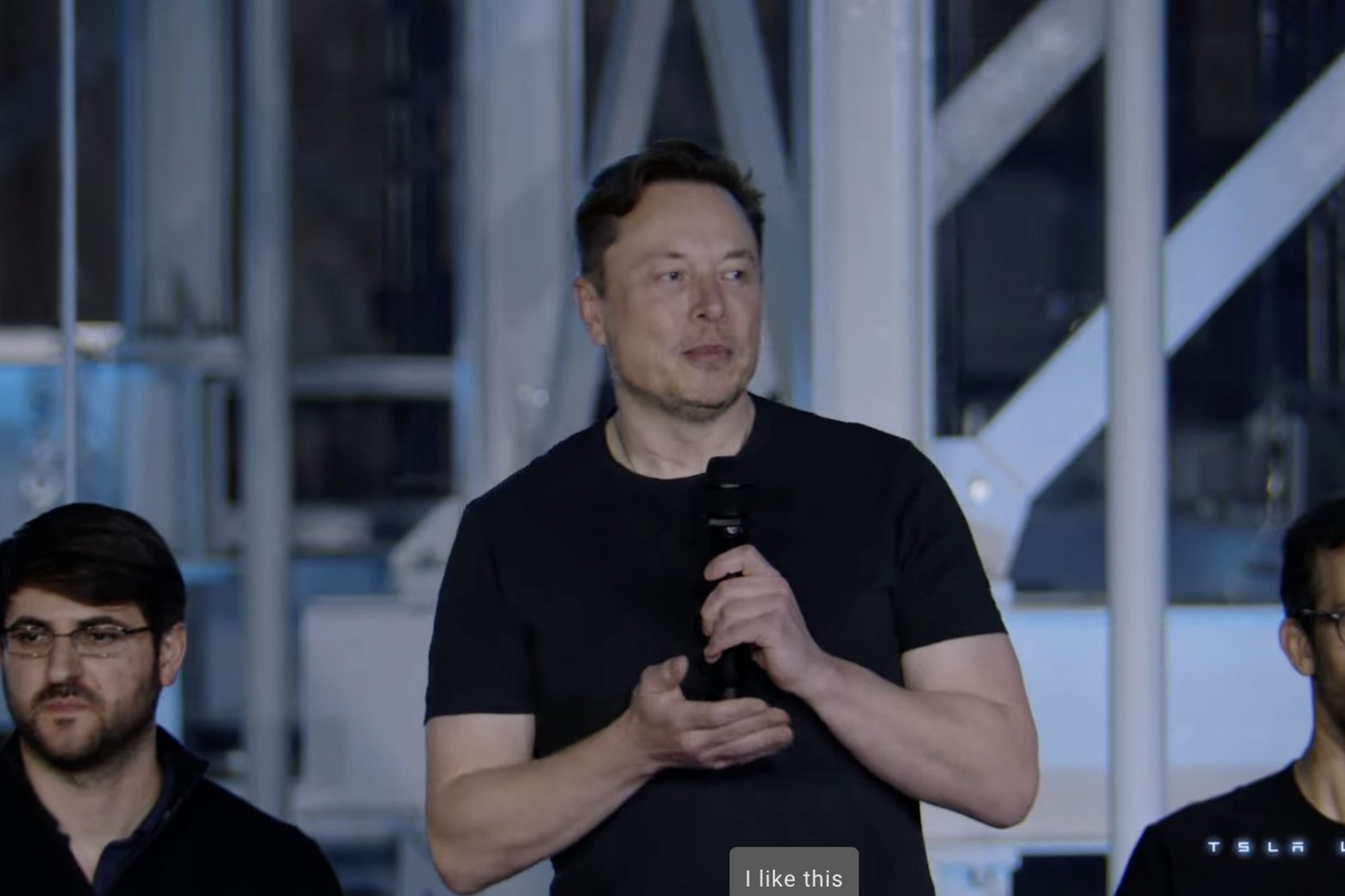/
Despite the seemingly global ambitions of Master Plan 3, Elon Musk didn’t give the people what they wanted: a glimpse of the company’s future lineup of more affordable EVs. But maybe dialing back on unfulfilled promises and focusing on the things you still need to accomplish is a good thing.
:format(webp)/cdn.vox-cdn.com/uploads/chorus_asset/file/24473791/Screen_Shot_2023_03_02_at_2.06.19_PM.png)
Elon Musk isn’t ready to pull back the curtain quite yet.
During the Q&A portion of Tesla’s Investor Day event in Austin, Texas, last night, Musk was repeatedly asked about the company’s next-generation low-cost electric vehicles. For years, Musk has been promising smaller, cheaper vehicles made possible by a more efficient, less expensive manufacturing process. But the closest we got were images of two vehicles covered in white sheets, one shaped like a small car and the other seemingly like a van.
Investors begged Musk for more details. A name! Some specs! A timeline! More importantly, a price! But Musk dodged each question like it was a liability lawsuit. “We will have a proper product event, but we’ll be jumping the gun if we’re to answer your questions,” he said after another investor tried to pry something — anything, really — out of the uncharacteristically closed-mouth CEO.
:format(webp)/cdn.vox-cdn.com/uploads/chorus_asset/file/24473845/Screen_Shot_2023_03_02_at_2.28.58_PM.png)
Investor Day felt both big and small at the same time. It was extremely detailed, occasionally dull, very much in the weeds, but generally lacked the bombast and wild overpromises of past Tesla events. Which is not to say that Tesla isn’t trying to tackle big problems. In Musk’s eyes, the company is on the forefront of a renewable energy revolution that will eventually encompass everything from our cars and homes to our whole way of life.
“I really wanted today to be not just about Tesla investors who own stock, but really anyone who is an investor in Earth,” Musk said optimistically.
For over four hours, we got a deep dive into Tesla’s energy storage business, supply chain practices, capital expenditures, charging infrastructure investments, and not much else. No new cars, scant product updates, and a more demur version of Musk. (When not onstage, he was off in the wings tweeting about Ukraine and making fun of Keith Olbermann. So safe to say he wasn’t totally present.)
The money people were quick to declare it a wash. CNBC hosts bemoaned the lack of specifics. Tesla’s stock fell in after-hours trading and fell further when the market opened on Thursday, which Wedbush analyst Dan Ives called a “knee jerk” reaction to the absence of any real product announcements. And Edmunds’ Jessica Caldwell said a better use of Musk’s time may have been outlining a path to sustainable profits, especially as Tesla’s status as market leader appears to be slipping.
To be sure, these sentiments weren’t widespread. A quick glance at the retail investor community, which is much more sympathetic to Musk and Tesla, and you’ll see a plethora of tweets and YouTube videos with captions like “HOLY ****” and “OMG GENIUS” in response to the Investor Day presentation. But it all felt pretty forced.
Look, saving the Earth rarely makes an exciting tech presentation. But Musk’s savior complex has taken a beating over the years. His bungled acquisition of Twitter has exposed his more reactionary tendencies, which has been a huge turnoff for some of his progressive-minded customers. The failed promises (“1 million robotaxis”) and delayed products (Cybertruck when?) have taken a toll on his reputation as an entrepreneurial visionary and all-around business genius. A 760mph hyperloop became a 50mph “Tesla in a tunnel.”
Maybe dialing back on the unfulfilled promises and focusing on the things you still need to accomplish is a good thing. Tesla’s previous Master Plans have been largely hit-or-miss. Part Deux, especially, remains broadly unfulfilled. And specifics of the third part of the plan still need to be fleshed out; Musk has promised a detailed white paper is forthcoming — but it seems to wisely steer clear of any benchmarks and deadlines that could be used to undermine Tesla’s credibility in the future.
For example, Master Plan 3 calls for $10 trillion in renewable energy investment but doesn’t say who will pay for it. It also calls for 240TWh of energy storage capacity but doesn’t specify who will build it. The message was that this will be a global effort — and not one exclusively by Tesla and for Tesla customers.
Investing in renewable energy and reducing manufacturing costs are rarely sexy subjects. But fewer sexy subjects may be just what Tesla needs to reorient itself on a more sustainable and realistic path forward.
